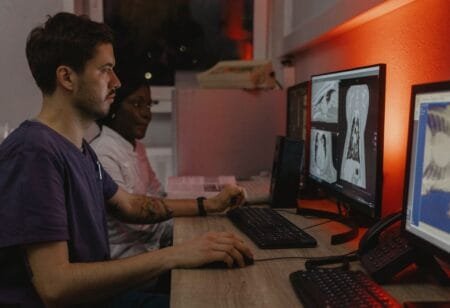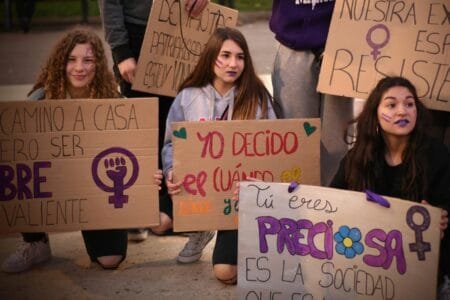The European Commission has proposed new rules for more effective and widespread confiscation of funds and other property acquired through crime. This will enhance the ability of Member States to confiscate assets that have been transferred to third parties, it will make it easier to confiscate criminal assets even when the suspect has fled and will ensure that competent authorities can temporarily freeze assets that risk disappearing if no action is taken.
Advertisement
What is the scale of the problem?
On a global level, according to United Nations estimates1, the total amount of criminal profits in 2009 was approximately USD 2.1 trillion, or 3.6 of global GDP in that year.
There are no general estimates of the size of criminal profits in the European Union, but in some of the Member States. For instance, in Italy organised annual crime revenues were an estimated 150 billion in 2011. In the United Kingdom in 2006 organised criminal revenue was estimated at £15 billion.
The global drug trade alone generated USD 321 billion in 2005 according to the United Nations. Trafficking in human beings is globally worth USD 42.5 billion per year according to the Council of Europe. The global market in counterfeit goods was estimated at up to USD 250 billion per year by the OECD. Corruption in the EU is estimated to cost as much as 1 % of EU GDP per year. In Italy the annual costs of corruption were estimated at 60 billion per year by the Court of Auditors.
The sums confiscated by Member States are modest in comparison. For example, in the United Kingdom in 2006 £125 million were recovered by the State. More recently, in 2009, confiscated assets for example amounted to 185 million in France, £ 154 million in the United Kingdom, 50 million in the Netherlands and 281 million in Germany.
What is already being done at EU level?
The existing EU legal framework (consisting of Framework Decisions 2001/500/JHA, 2003/577/JHA, 2005/212/JHA, 2006/783/JHA and 2007/845/JHA) has proven to be inadequate, unevenly implemented and under-used. As shown in the implementation reports published by the Commission, the existing rules are applied differently and confiscation and asset recovery activities are hindered as a result of substantial differences between Member States’ legislations.
The Commission highlighted those shortcomings in its 2008 Communication
‘Proceeds of crime Ensuring that crime does not pay’.
Why propose new EU legislation?
Confiscation is a strategic priority in the fight against organised crime and needs a European approach. Criminal activities are often transnational and the assets of criminal groups are increasingly invested outside their country.
Organised crime groups engage in an increasingly wide range of profitable illegal activities, and reinvest substantial profits in legal activities. This affects the functioning of the Internal Market by distorting competition with legitimate businesses and undermines trust in the economy, affecting investment and growth. It deprives public authorities of funds needed to provide public services, particularly needed in times of crisis and budgetary constraint.
Today’s tools for freezing, managing and confiscating criminal assets are not effective enough.
The proposal responds to calls for action from the other EU institutions. In 2010 Council conclusions called on the Commission to consider strengthening the EU legal framework for combating organised crime. In October 2010, the European Parliament adopted a report on organised crime also calling for new legislation on confiscation as soon as possible.
What is the Commission proposing to do now?
Today’s proposal for a Directive aims to set up a more comprehensive and coherent EU legal framework for the confiscation of profit (assets) from serious and organised criminality. It will simplify existing rules and fill gaps which have benefitted criminals until now. It will, in particular:
Lay down clearer and more efficient rules on the confiscation of assets which are not directly linked to a specific crime, but which clearly result from similar criminal activities committed by the convicted person (extended confiscation).
Strengthen rules on confiscation where assets have been transferred from the suspect to a third party who should have realised that they were illegal or the fact that they were transferred in order to avoid confiscation (third-party confiscation).
Allow confiscation of criminal assets where a criminal conviction is not possible because the suspect is deceased, permanently ill or has fled (limited non-conviction based confiscation).
Ensure that competent authorities, such as prosecutors, can temporarily freeze assets that risk disappearing if no action is taken, subject to confirmation by a court as soon as possible (precautionary freezing).
Allow financial investigations on a person’s assets to be continued for years after a criminal conviction in order to fully execute a previously issued confiscation order (effective execution).
Require Member States to manage frozen or confiscated assets so that they do not lose economic value (asset management).
Require Member States to regularly collect data on confiscation and asset recovery (statistics).
What will the impact of the new rules be?
The new rules would have significant impact on criminal behaviour. They would oblige criminals to change their practices and make it more difficult for them to hide their assets.
Extended confiscation powers are already provided for in the EU legislation. This proposal streamlines the existing regime, by providing for a single minimum standard. It will be a lot easier to apply extended confiscation and will make cross-border cooperation easier.
The application of non-conviction based confiscation, (freezing and confiscating assets irrespective of a prior conviction of the owner in a criminal court), even in limited cases, may have a substantial impact on organised crime. In Italy the application of non-conviction based confiscation provisions to a dead suspect’s heirs allowed authorities, in 2010, to freeze, in a single case, assets estimated to be worth at least 700 million. In this case, a businessman suspected of being the “fiduciary person” of an important organised crime group, died from unknown causes. He had been convicted of participation in a criminal organisation by a first instance criminal court, but an appeal was pending. The assets frozen included 136 apartments, 11 warehouses, 75 land estates, 8 shops, 2 villas, 51 garages, company shares and bank accounts, for a total value estimated between 700 million and 2 billion. In 2008 Italy had passed legislation which could prevent the heirs from a deceased defendant, whose assets have been frozen, from legally inheriting the assets and having them released. The businessman’s relatives were not able to explain the legal origin of all these assets, nor the huge disproportion between their declared revenues and the frozen assets.
The provisions allowing third party confiscation, even in limited cases, will mitigate the effects of the increasingly widespread practice by suspects of transferring property to a knowing third party to avoid confiscation.
The use of precautionary freezing powers in urgent cases, prior to seeking a court order or pending its request, will prevent that assets disappear and ensure that they remain available for confiscation.
The rules on effective execution of confiscation orders will prevent convicted persons, who were successful in hiding the proceeds of their crimes throughout the entire duration of criminal proceedings, from enjoying their ill-gotten wealth with impunity once they are released from prison.
How does confiscation work in practice?
The proceeds of crimes generating huge income and liquidity are converted into assets ranging from cash held in bank accounts to real estate, vehicles, livestock, artworks, company shares, businesses, collector’s items etc. State authorities should be able to quickly identify and trace such assets, freeze them and manage them properly once they have been frozen.
Confiscation and recovery of criminal assets are two stages of a legal process whereby criminal assets are recovered in favour of crime victims, deprived communities or the state. At the heart of this process lies the determination by a court that particular assets are criminal and, thereby, liable to confiscation.
The first stage in the asset recovery process is the tracing and identification of assets. This phase involves law enforcement investigations (usually under the coordination of a prosecutor) and requires substantial financial investigation skills. National Asset Recovery Offices (AROs) in the Member States play a key role in expediently providing information to other AROs on the assets located in their territory (see last Commission report on Asset Recovery Offices IP/11/464).
Once criminal assets are located in one or more countries, judicial procedures are needed to first freeze them and later to confiscate them. Assets should be properly managed between the time when they are frozen and the time when a confiscation order is issued, so that their value is maintained. After a confiscation order has been issued by a court (usually when the person is convicted), its execution is carried out.
A typical example is operation “Shovel” (2010), conducted by the Spanish authorities in collaboration with the United Kingdom, Ireland and Belgium and with the assistance of Europol. The targeted criminal group led by Irish and UK criminals was involved in drug and weapons trafficking, money laundering, forgery of documents and murders. Over 700 police officers were deployed in many Member States on the day of the operation (more than 145 persons and 100 companies were raided/involved?). “Shovel” resulted in 38 arrests (24 in Spain including two lawyers who facilitated money laundering operations, 12 in the UK, 1 in Ireland and 1 in Bulgaria). 60 luxury properties in “Costa del Sol”, 25 luxury cars and 180 bank accounts were also frozen.
Source: European Commission





